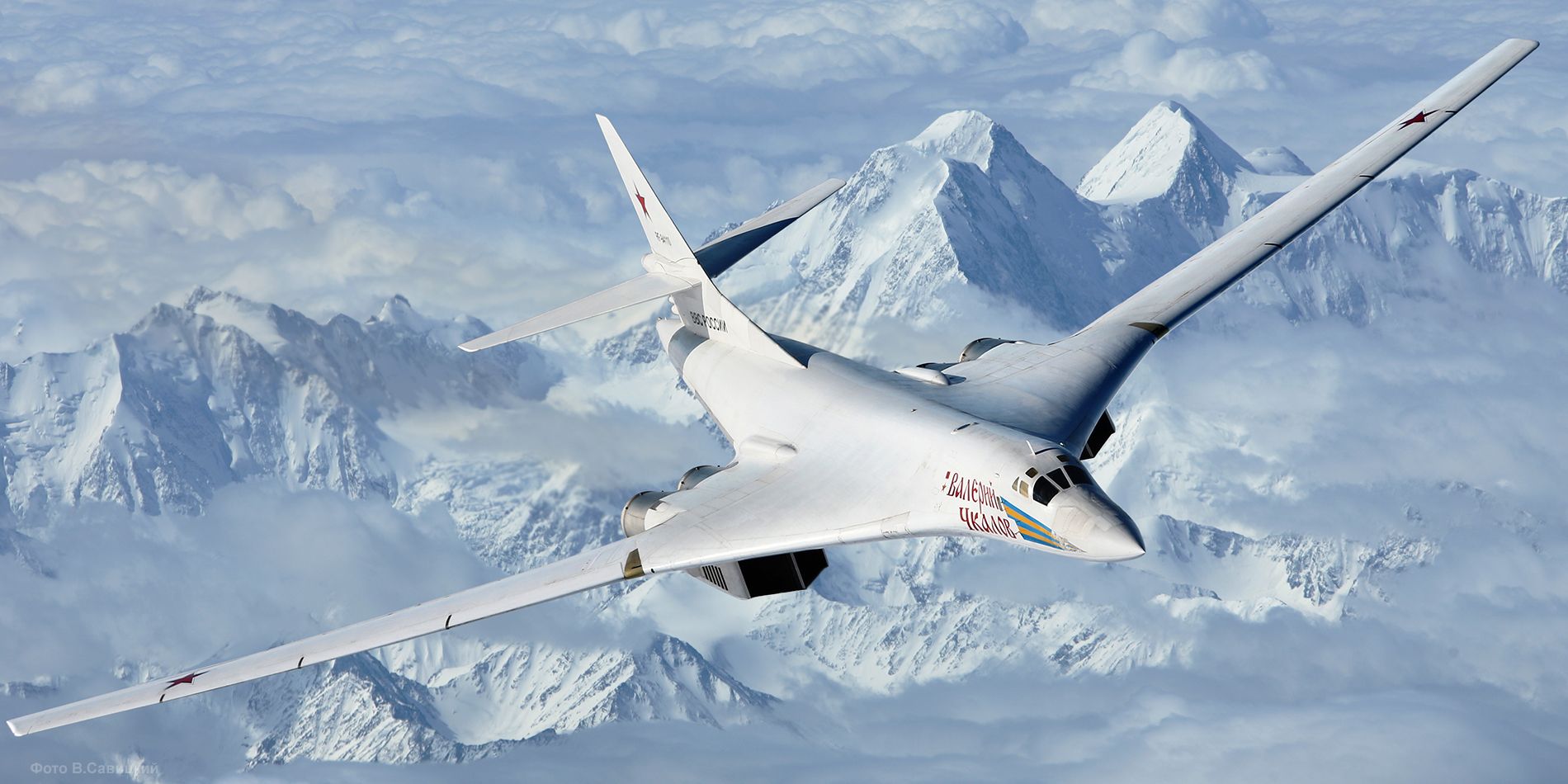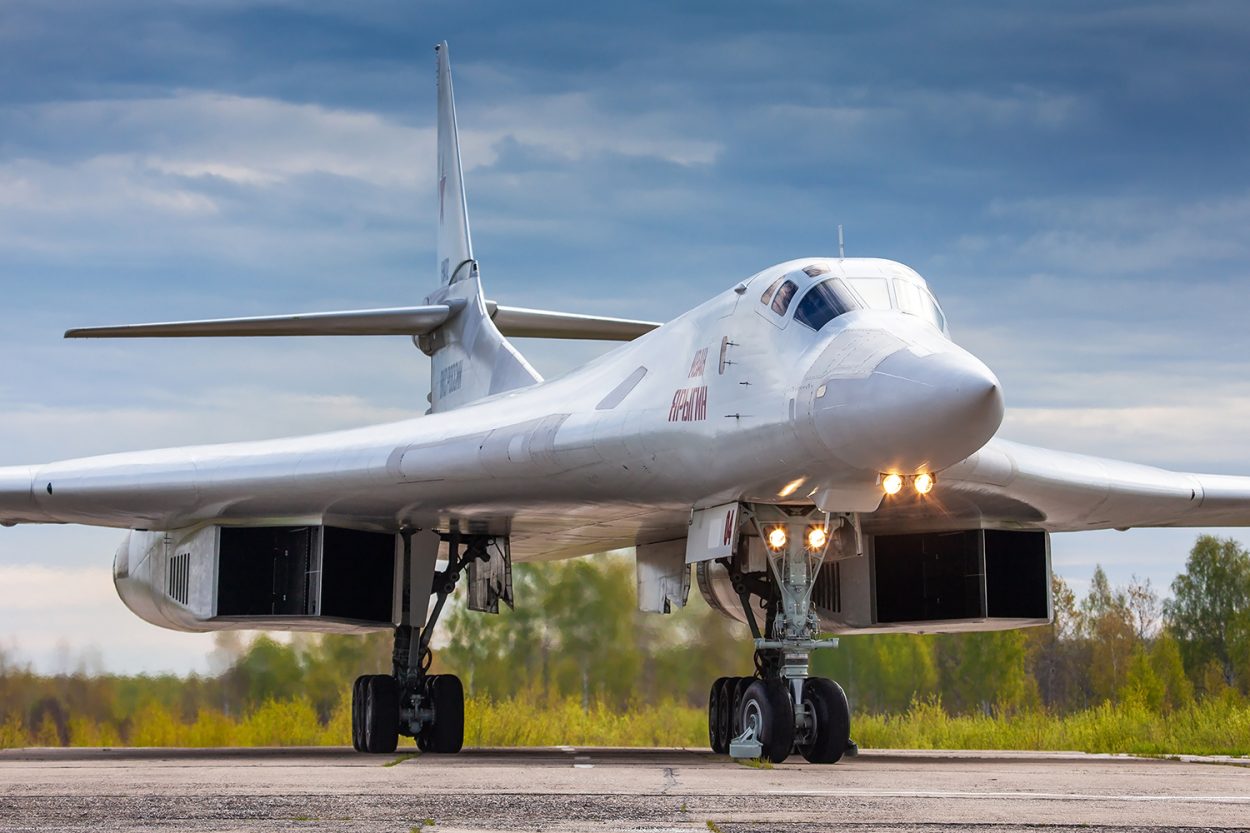An unnamed Russian aerospace engineer reportedly approached the American authorities in late December last year, seeking asylum and offering to reveal military secrets about Russia’s prized Tu-160 strategic bomber.
Meet China’s ‘Futuristic & Covert’ Unit Believed To Be Behind Balloon Campaigns Over US, India & Japan
According to a recent report citing an unclassified US Customs and Border Protection report, this Russian aerospace engineer and his family arrived in the United States from Mexico in an armored SU. They asked to be admitted into the country, as he feared persecution for participating in anti-Putin protests in support of jailed Russian opposition leader Alexei Navalny.
He then offered to share information on Russia’s Tu-160 bombe,r saying he was a civil engineer and his previous employment had included working from 2018 to 2021 at the Tupolev aircraft production facility in Kazan, Russia.
“He described the aircraft type as ‘an attack jet’ and said it ‘was called White Swan-Tu-160, the largest military aircraft,'” according to an unclassified CBP report, dated January 11, obtained by Yahoo News.
Michael Kofman, director of the Russia studies program at the Center for Naval Analyses, said that while he had no independent knowledge of this Russian engineer, but in general, a person working in such a position could be exposed to valuable information.

“An individual working at a defense industrial facility such as Tuplov could have access to a range of information on defense industrial production, specifications related to the Tu-160 bomber and its more recently developed modernized variant, various production processes, dependencies and where their limitations lie,” said Kofman.
“Someone in such a position could accumulate knowledge by virtue of the types of information they’re exposed to on the job, some of which could prove valuable,” he continued.
Notably, Russia has been using Tu-160 bombers in its ongoing ‘special military operation’ in Ukraine, and therefore information about this bomber could be very valuable at a time when the US and its allies continued to send military equipment to Ukraine.
“Would a site manager know if they modified the remodeled bombers to shoot hypersonic missiles? He might. And that would be a really big deal if the White Swan was retrofitted to fire hypersonic missiles. They are fast and launched from much farther away,” an unnamed US military intelligence official told Yahoo News.
“We don’t have anything that can defend against hypersonic missiles — meaning, Patriot systems and all the rest of what we are supplying Ukraine, it’s useless,” the official further said.
Tu-160′ White Swan’ Strategic Bomber
The Tu-160 White Swan, also known by the NATO reporting name ‘Blackjack,’ is said to be Russia’s most advanced strategic bomber. Developed by the erstwhile Soviet Union and later adopted by Russia, the Tu-160s, along with the Tu-95MS bombers, are the mainstay of the Russian Air Force’s long-range aviation.
Externally, the bomber resembles the US Air Force’s Rockwell B-,1 Lancer, as both have sweeping wings and can attain supersonic speeds, however, the B-1B is smaller and was designed to be a bomber in the traditional sense, whereas the Tu-160 was built to be a stand-off weapons platform.
The bright white reflective coating that covers the Tu-160’s entire airframe gave the plane the moniker ‘White Swan.’ The coating was created to protect the crew if the nuclear payload was launched.
It is said that the coating might theoretically reflect some of the thermal energy (or light) during a nuclear explosion.
To enhance the Russian Aerospace Force’s (VKS) strategic bomber capabilities amid rising tension with the West and to compensate for delays in the PAK-DA bomber program, the Russian Ministry of Defense announced its decision to refurbish the Tu-160 bomber in 2015.
The upgraded variant, designated as Tu-160M, equipped with new NK-32-02 engines, flew for the first time from the Kazan Aviation Enterprise’s airfield in early November 2020.
The Kuznetsov NK-32 engine, originally installed in the Tu-160, is considered the world’s most powerful combat aircraft engine, producing over 55,000 pounds of thrust at full afterburner.

The upgrade program entails Russia updating 16 existing Tu-160s to Tu-160M configuration, and beyond that, the Russian military is expected to acquire around 50 Tu-160M aircraft, with a minimum manufacturing rate of three aircraft annually.
The serial production of the upgraded bomber is expected to start this year, which would be in keeping with the ten aircraft orders for 2023-2027.
The Tu-160M is designed to deploy nuclear and conventional armaments to strike enemy positions in remote locations, thereby enabling the Russian military to hit high-value targets deep inside enemy territory.
The update to the Tu-160M is being carried out in two stages, the first of which involves the removal of outdated components like the bomb sighting systems and the installation of the new K-042K-1 navigation system and ABSU-200-1 autopilot.
The second phase entails the installation of the improved NK-32-02 engines, the new Novella NV1.70 radar, a computerized “glass” cockpit, modern communications and anti-jamming equipment, as well as modern conventional and nuclear weapons.
Notably, the Russian engineer who has approached the US authorities with an offer to reveal the bomber’s secrets claims to have worked at the Tupolev aircraft production facility in Kazan between 2018 and 202.
During this time, a lot of work on the Tu-160M upgrade program must have happened.
Credibility Of The Russian Engineer
Usually, when someone approaches the US authorities asking for admission in exchange for information of interest to the United States, the CBP and the Department of Homeland Security (DHS) are supposed to verify the information provided.
If the information is confirmed as true and the person is deemed credible, only then are they passed off to the Federal Bureau of Investigation (FBI).
“The deal with a walk-in is his ID has to be verified,d and his story checked as well — that could take some time,” one US intelligence official explained to Yahoo News.
“If and only if he checks out, meaning he is who he says he is and worked where he said he did, if that were to happen, then the FBI would take over and whisk him away to probably a safe house where he’d be questioned.”
The CBP and DHS reportedly worked for about a week and a half to verify this Russian engineer’s identity and former place of employment, and by around January 11, he was deemed credible and of potential interest to the United States, after which he was handed over to the FBI for further questioning.
- Contact the author at tanmaykadam700@gmail.com
- Follow EurAsian Times on Google News




